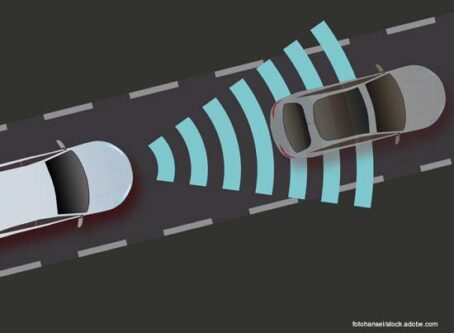FMCSA, NHTSA announce proposal to require AEBs on heavy vehicles
The U.S. Department of Transportation is proposing that automatic emergency braking systems and electronic stability control systems be required on newly manufactured heavy vehicles.
The Federal Motor Carrier Safety Administration and National Highway Traffic Safety Administration jointly announced on Thursday, June 22 that the agencies will publish a notice of proposed rulemaking in the next couple of weeks.
The agencies estimate that the proposal would prevent 19,118 crashes, 155 fatalities and 8,814 injuries annually.
“Establishing AEB standards is a key component of the Department’s National Roadway Safety Strategy,” FMCSA Administrator Robin Hutcheson said in a news release. “This technology can enhance the effectiveness of commercial motor vehicle crash reduction strategies and reduce roadway fatalities.”
The proposal would require automatic emergency braking systems on vehicles that weigh more than 10,000 pounds.
In addition, the proposal would require nearly all heavy vehicles to have an electronic stability control system that meets the equipment requirements, general system operational capability requirements and malfunction detection requirements in the Federal Motor Vehicle Safety Standards.
If the proposal eventually becomes a final rule, all Class 7 and 8 vehicles – those weighing more than 26,000 pounds – would be required to meet the automatic emergency braking standards three years after the rule takes effect. All Class 3-6 vehicles – those weighing from 10,001-26,000 pounds – would be required to meet the automatic emergency braking and electronic stability control requirements in four years. Small-volume manufacturers would have until five years after the final rule took effect. The proposal would not require existing heavy vehicles to be retrofitted with automatic emergency vehicle technology.
Once the notice of proposed rulemaking is published in the Federal Register, the public will have 60 days to comment. The agencies will then have to review all of the comments before deciding whether or not to move forward with a final rule. If that does happen, it could be 2027 or later before the first round of compliance would take effect.
Rushing a rule?
The announcement comes weeks after NHTSA announced that it launched an investigation about false braking on certain Freightliner and Western Star trucks.
The Owner-Operator Independent Drivers Association has long contended that the technology be perfected before any sort of mandate is issued.
“As we review the proposal, NHTSA and FMCSA must resolve any performance issues before any mandate is implemented,” said Jay Grimes, OOIDA’s director of federal affairs. “For example, NHTSA is currently investigating 250,000 heavy-duty trucks equipped with AEB that may inaccurately identify objects and cause unexpected stops. Drivers will also need more assurances that AEB technology will work in all types of road and weather conditions. We do agree with the agencies’ assessment that retrofitting current vehicles should not be included as part of the proposal.”
The heavy vehicle rule would coincide with a NHTSA proposal to require automatic emergency braking on passenger cars and light trucks weighing 10,000 pounds or less. If approved, new light vehicles would be required to have the technology three years after a final rule takes effect. LL









